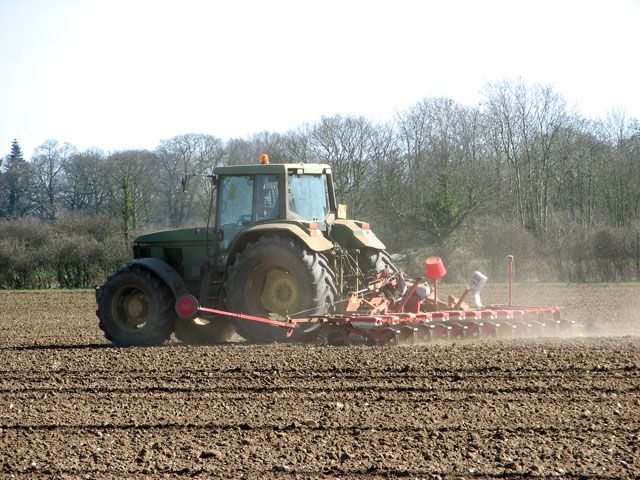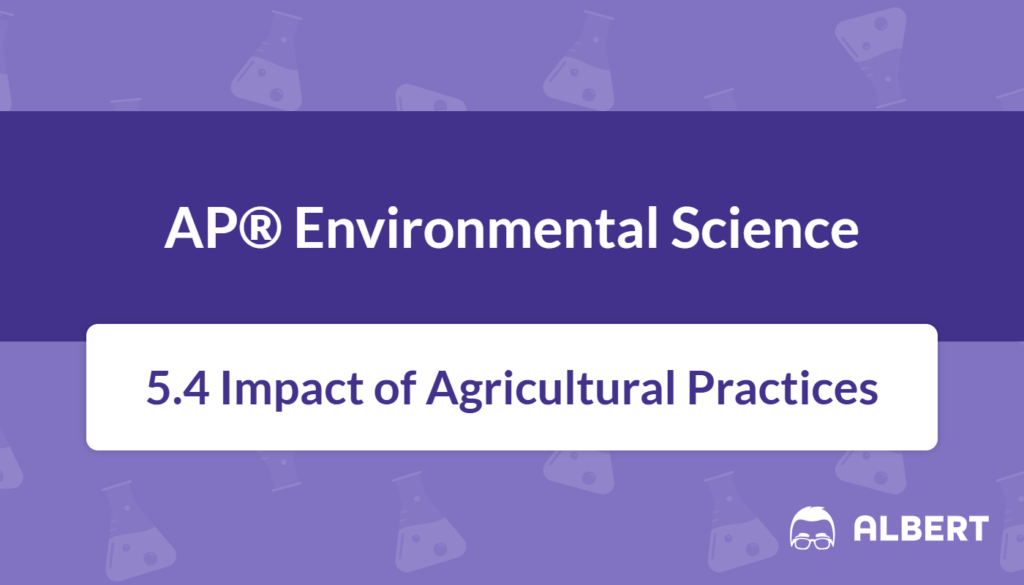What We Review
Introduction
Agricultural practices are essential for producing the food that supports human populations worldwide. However, certain methods sometimes disrupt ecosystems and contribute to pressing environmental challenges. Recognizing how these methods affect soil, water, and biodiversity helps guide more sustainable approaches. This article focuses on three main agricultural practices—tilling, slash-and-burn farming, and the use of fertilizers—and explains the environmental impacts associated with each. Topics such as soil erosion, deforestation, eutrophication, and biodiversity loss are covered, all of which connect with AP® Environmental Science standards. By exploring both the drawbacks of common techniques and sustainable alternatives, learners can gain insights into how to manage resources responsibly.
Understanding Agricultural Practices
Agricultural practices refer to the different methods and strategies used to grow crops and raise livestock. These methods range from simple hand-seeding to highly industrialized operations involving large machines. They have developed over thousands of years but continue adapting based on scientific advances. Although these methods aim to maximize food production, they can also lead to environmental issues such as water pollution and soil degradation. Therefore, analyzing their broader impacts is a critical part of AP® Environmental Science, where students learn how human activities alter ecosystems and the global environment.
Most concerning are certain practices that negatively affect soil fertility and biodiversity, which ultimately threaten food security. Indeed, an unsustainable practice might yield high production briefly, but it can harm the land in the long term. As a result, scientists and farmers explore more eco-friendly approaches to protect our resources and ensure that land remains productive for future generations.
Tilling: Turning the Soil
Definition and Purpose
Tilling is the process of breaking up and turning over the top layer of soil before planting seeds. This method loosens the soil, making it easier for plant roots to spread and absorb nutrients. Tilling also helps mix organic matter into the ground. While this practice has been common for centuries, its widespread use in modern industrial farming can lead to ecological concerns when overused or done improperly.

Example: How Tilling Is Done
- Remove plant debris: A field is first cleared of any old plant material, such as crop residues.
- Set the tilling depth: A farmer adjusts the tiller blade depth to reach a specified layer of soil.
- Operate machinery: Tractors or mechanized tillers move through the field, slicing and turning over the soil.
- Break clods: The machine may further break down larger clods and level the field.
- Prepare seedbed: Once the soil is turned and leveled, seed planting can begin.
Impacts
- Soil Erosion: Constant exposure of topsoil to wind and rain raises the chance of soil being washed or blown away. Scientists often use the Revised Universal Soil Loss Equation (A = R \times K \times LS \times C \times P) to estimate soil erosion rates.
- Loss of Soil Moisture: Turning the soil increases evaporation of water from the surface. Reduced moisture often leads to reduced productivity.
- Disruption of Soil Ecosystems: Tilling can harm beneficial worms, insects, and microorganisms crucial for soil fertility. As a result, the complex biodiversity beneath the surface may decrease, affecting crop quality over time.
Slash-and-Burn Farming: A Double-Edged Sword
Definition
Slash-and-burn farming involves cutting down vegetation in a specific area and then burning it to clear the land for crops. This approach is often practiced in regions with nutrient-poor soils, like tropical rainforests. While it can be effective for short-term farming, it creates several environmental concerns.
Example: The Slash-and-Burn Process
- Select a forested plot: Farmers identify a tract of land with trees and undergrowth.
- Cut and dry the vegetation: Trees and shrubs are cut, and the resulting debris is left to dry.
- Carry out the burn: The dried material is burned, releasing nutrients from the vegetation into the soil.
- Plant new crops: Crops are sown in the nutrient-rich topsoil made available by the ash.
- Abandon field: After nutrients are used up, farmers may move on to another tract, repeating the cycle.
Impacts
- Deforestation: Large areas of forest are removed, which reduces carbon storage and alters the carbon cycle.
- Loss of Biodiversity: Many plant and animal species lose their habitats as forests are cleared.
- Soil Depletion: The initial nutrient boost from the ash is short-lived, so soil fertility quickly declines, leading to poor yields and barren land.
Fertilizers: Boosting Growth but Causing Problems
Definition
Fertilizers are substances added to soil to supply nutrients that crops need for healthy growth. They often contain nitrogen, phosphorus, and potassium—key elements for plant development. There are two main types: synthetic (chemically manufactured) and organic (derived from natural sources like compost or manure).
Example: Applying Fertilizers on a Typical Farm
- Testing Soil: A farmer gathers soil samples to determine existing nutrient levels.
- Selecting Fertilizer Type: Based on the results, the farmer chooses between synthetic blends or organic compost.
- Broadcasting or Injection: Fertilizer is spread across the field or injected directly near plant roots.
- Irrigating: Water helps dissolve nutrients, making them available for plant uptake.
- Monitoring Growth: Farmers observe crops to ensure they receive sufficient but not excessive nutrients.
Impacts
- Water Pollution (Eutrophication): Excess fertilizer runoff can accumulate in nearby rivers and lakes, fueling algae blooms. These blooms deplete oxygen levels, harming fish and other organisms.
- Soil Health Deterioration: Heavy use of some synthetic fertilizers may disrupt beneficial microorganisms, reducing soil quality over time.
- Disruption of Local Ecosystems: Nutrient imbalances can favor certain species over others, resulting in altered food webs that reduce biodiversity.
The Bigger Picture: Sustainable Practices
Examples of environmental damage from tilling, slash-and-burn, and fertilizer use illustrate why scientists promote sustainable solutions. Agricultural methods that minimize land degradation and preserve habitats are crucial to supporting a stable population growth model and healthy local ecosystems. These methods often follow principles like maintaining crop diversity, safeguarding water resources, and reducing greenhouse gas emissions.
Alternatives to Damaging Practices
- Crop Rotation: Plant different crops in sequence, which can restore nutrients to the soil more naturally.
- No-Till Farming: Avoid turning the soil, thereby reducing erosion and preserving soil organisms.
- Organic Farming: Rely on compost, manure, and natural pest-control methods instead of synthetic chemicals.
Example: Benefits of Crop Rotation
- Choose rotation sequence: For instance, planting nitrogen-fixing legumes (e.g., beans) first, then cereal grains (e.g., wheat).
- Grow legumes: These crops add nitrogen to the soil, reducing the need for synthetic fertilizers in the following season.
- Transition to cereals: The next set of crops benefits from the improved soil nitrates.
- Limit pests: By rotating crops, pest and disease cycles are disrupted, reducing chemical pesticide use.
- Sustain soil health: Different root structures and nutrient demands prevent soil from becoming depleted.
Through these methods, farmers can protect soil, preserve water quality, and strengthen crop production. This approach aligns with the growing demand for renewable energy sources and overall environmental protection, reflecting an integrated approach to sustainability.
Conclusion
Tilling, slash-and-burn farming, and fertilizer use all serve immediate farming needs, but they can cause environmental problems when not managed responsibly. Tilling makes it easier for crops to take root, yet it promotes soil erosion and disrupts soil communities. Slash-and-burn supplies a burst of nutrients, but it also accelerates deforestation and biodiversity loss. Fertilizers boost yields but sometimes lead to eutrophication and soil health deterioration. Sustainable practices—such as crop rotation, no-till farming, and organic approaches—offer solutions that balance high production with environmental preservation.
Agricultural practices will remain a central focus of AP® Environmental Science because they illustrate the delicate equilibrium between meeting human demands and safeguarding Earth’s resources. Identifying long-term, eco-friendly strategies is vital to sustaining both food supplies and natural ecosystems. Works in progress—in research labs, on farms, and in environmental policies—show that innovative thinking can shape a more sustainable future.
Important Vocabulary
- Agricultural Practices: Methods used in farming or raising livestock to produce food, fiber, and other products.
- Tilling: The act of turning and breaking up soil to prepare it for planting.
- Slash-and-Burn Farming: The practice of cutting and burning vegetation to clear land for agriculture.
- Fertilizer: A material added to soil to supply nutrients essential for plant growth, often containing nitrogen, phosphorus, and potassium.
- Eutrophication: Excessive nutrient buildup in water bodies leading to algae blooms and reduced oxygen levels for aquatic life.
Sharpen Your Skills for AP® Environmental Science
Are you preparing for the AP® Environmental Science test? We’ve got you covered! Try our review articles designed to help you confidently tackle real-world AP® Environmental Science problems. You’ll find everything you need to succeed, from quick tips to detailed strategies. Start exploring now!
Need help preparing for your AP® Environmental Science exam?
Albert has hundreds of AP® Environmental Science practice questions, free response, and full-length practice tests to try out.








